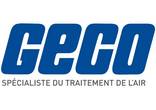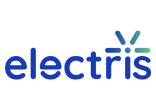
Strain as a lever to enhance future ferroelectric photovoltaic
A paper entitled “Increasing bulk photovoltaic current by strain tuning” has been published in the March edition of the open-access scientific journal Science Advances, from the American Association for the Advancement of Science. The paper, detailing the first-ever description of a new physical effect, was written by LIST researchers specialized in ferroic materials for transducers Shankari Nadupalli and Torsten Granzow, as well as Prof. Jens Kreisel – now vice-rector of the University of Luxembourg.
Ferroelectrics as an alternative
Throughout the text, researchers focus on photovoltaic phenomena, allowing voltage and electric current to be created upon exposure to light, and specifically demonstrate how to increase the current in nonconventional photovoltaic materials by mechanical strain. These materials differ from classic materials, made of crystalline silicon, which currently dominate the market. The materials studied by LIST researchers are ferroelectric photovoltaics, a quite recent field of research interest for more efficient photovoltaic materials in various related applications, such as electronic products, solar panels, etc.
Thanks to their work, the researchers were able to evidence the existence of a purely intrinsic “piezo-photovoltaic” effect, leading to a linear increase in photovoltaic current density with stress. The increase reaches 75% under a low uniaxial compressive stress of 10 MPa, corresponding to a strain of only 0.005%.
“For ’normal’ photovoltaics based on semiconductors, there is the Shockley-Queisser limit of the efficiency. Ferroelectric photovoltaics are not thus limited and potentially allow for very high efficiencies”, explains Torsten Granzow, one of the co-authors.
This paper was written as part of the “Stress-modulated Bulk Photovoltaic Effect in Polar Oxide Ceramics” (S-MOD PV) and “Coupling in Multifunctional ferroic materials” (CO-FERMAT) research projects, both funded by the Luxembourg National Research Fund (FNR).
Towards a new generation of photovoltaics
The results are of great interest and could further increase interest in the new generation of photovoltaic materials based on ferroelectrics. In the coming years, researchers hope to create a significant efficiency increase in multi-junction systems, combining ferroelectric photovoltaics with conventional techniques.
To reach this goal, research on the topic is ongoing. A follow-up project entitled “Photovoltaics : Advanced Concepts for High Efficiency” (PACE) has been accepted for funding by the FNR. In this project,,LIST and its partners intend to develop a ferroelectrics-based photovoltaic cell as a wide-bandgap top cell for a multi-junction solar cell, using the newly discovered piezo-photovoltaic effect to increase its efficiency.

News The Luxembourg Institute of Science and Technology (LIST)




















































